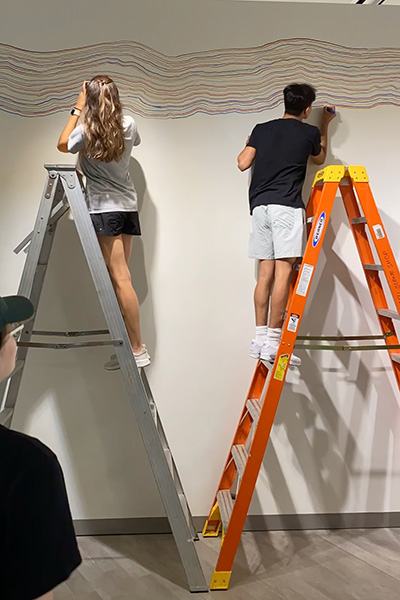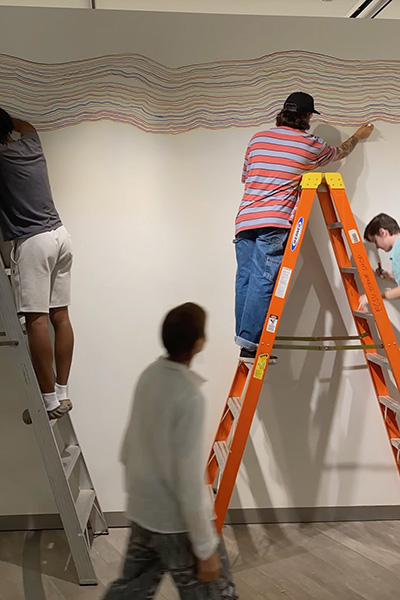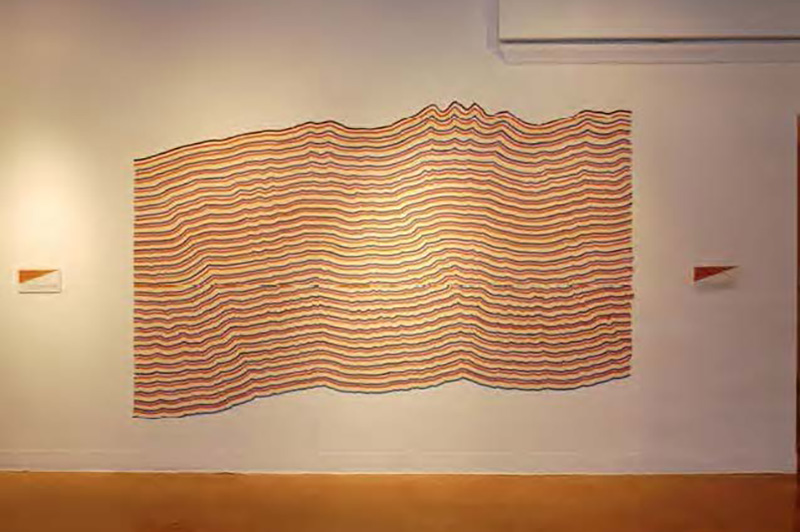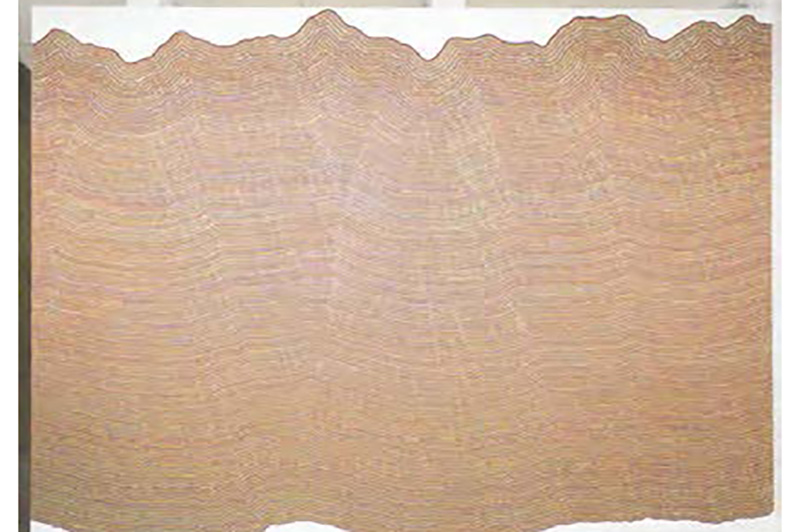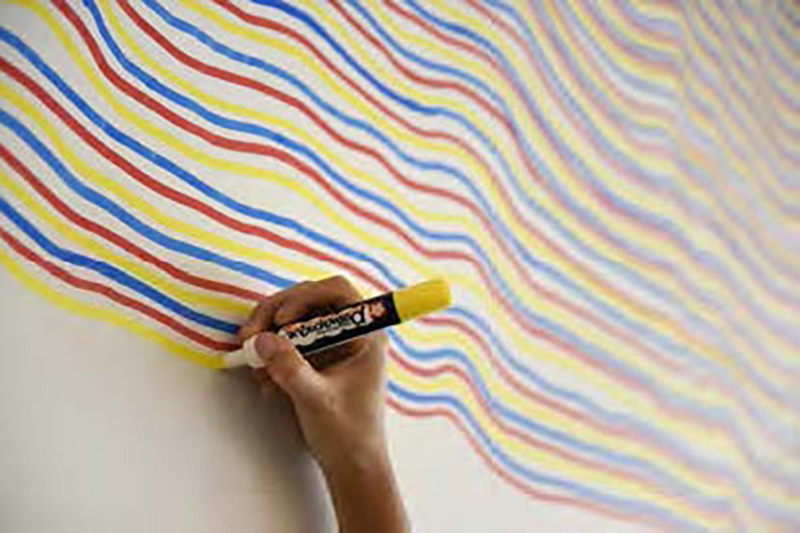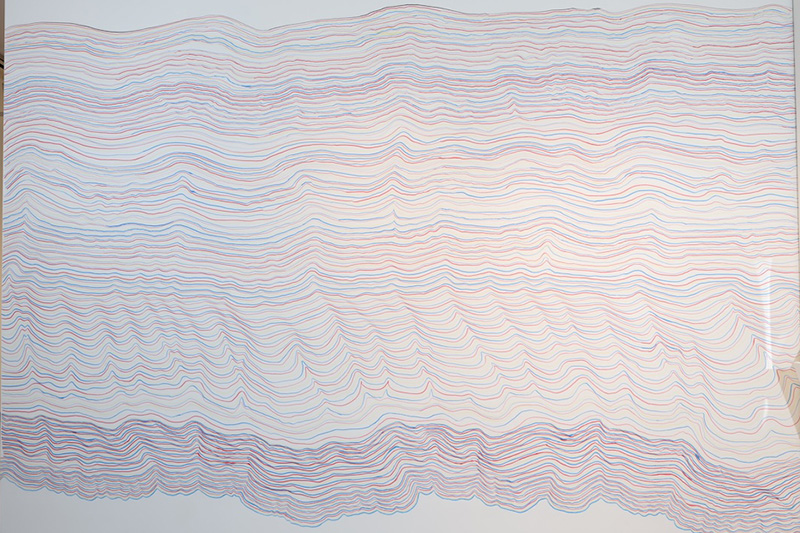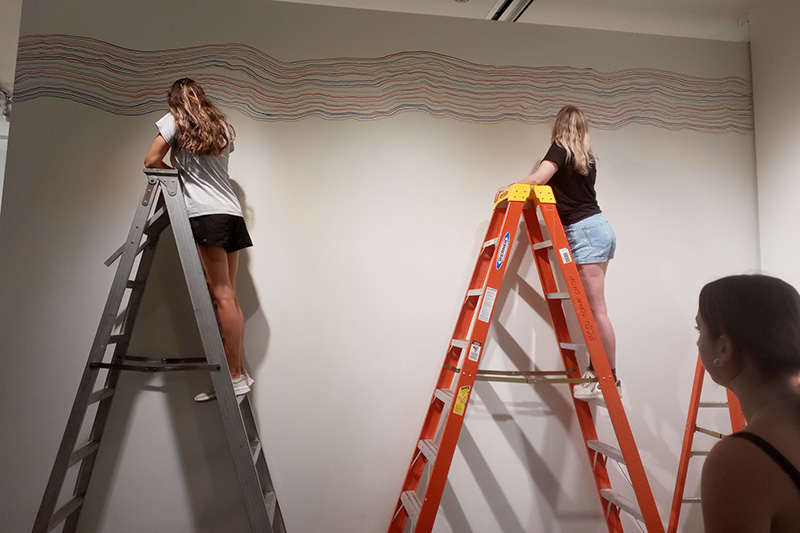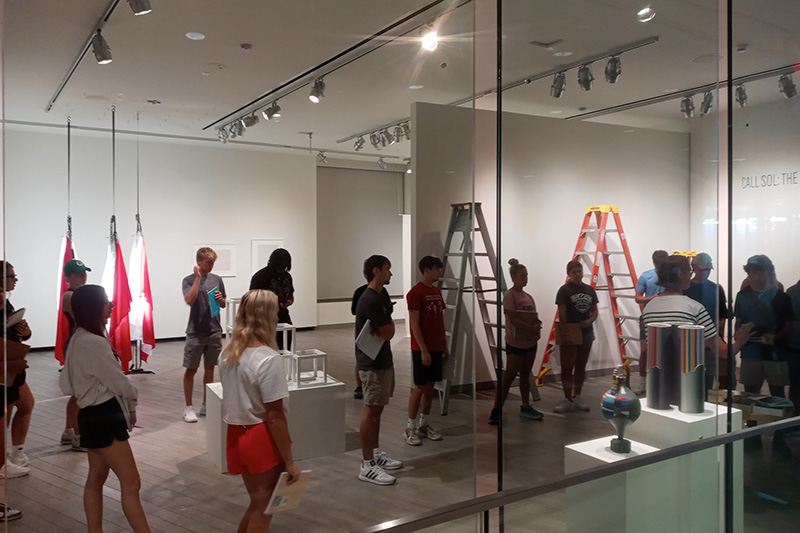- Apply
- Visit
- Request Info
- Give
No two alike: Student’s research finds LeWitt drawing inspires varied versions
Written by Lucinda Weiss
Published on November 22, 2023
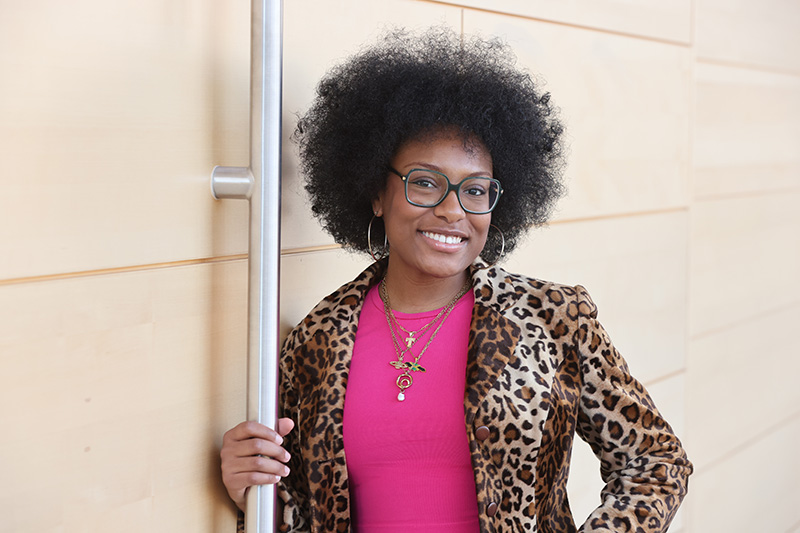
Sol LeWitt wall drawings come with instructions on how to draw them, and these were followed by art students at Eastern Connecticut State University when they prepared one of the artist’s drawings, #797, for a recent show at the Art Gallery, “Call Sol: The Enduring Legacy of Sol LeWitt.”
LeWitt, a pioneer of the minimalist and conceptual art movements, provided directions for his drawings to be executed by others. Drawing #797’s instructions say to start with a black horizontal line near the top of the wall, and each line under that, in red, yellow or blue marker, mimics the first, until the bottom of the wall is reached.
But as student Tiffany Henry learned, the artist’s instructions don’t guarantee that each version of #797 will come out the same. In a research project, “Did You Follow the Instructions? Variations on Sol LeWitt’s Wall Drawing 797,” Henry tracked examples of installations all over the world. No two were alike.
“Each piece is a game of telephone, each person’s interpretation of the original line brings character to the piece,” she wrote.
Henry, a junior majoring in philosophy with an art minor, is a gallery assistant at the Art Gallery. She found examples of #797 at places as varied as Greenwich Academy and the Max Planck Institute in Germany. Where LeWitt specified the type of archival markers to be used in executing his drawing, the Greenwich students used what looked like highlighters, Henry said. The Max Planck’s drawing, her favorite, “started with a line that looks similar to a wavelength,” she wrote. The spacing between the lines gave a “thin, mesh-like effect.”
The #797 at MassMOCA, the Massachusetts Museum of Contemporary Art, had the straightest lines of any example she found, and its bold lines seemed “as if it was the mature version of the Greenwich Academy interpretation,” Henry wrote. MassMOCA has a three-floor retrospective of LeWitt’s drawings on display through 2043.
Some of the drawings she found started with a wavy top line; others began with sharp peaks in the top line. The top line in the first installation in 1965 at Amherst College was inspired by the outline of the Berkshire Hills in Massachusetts.
The Wesleyan University version that Henry found had compact lines with little or no spacing in between and a compact interpretation. The version at the Blanton Museum of Art at the University of Texas, created by 49 students, overlapped some colors, giving an overall “beautiful earth tone,” she said. The University of Arizona’s Museum of Art drawing resembled a waving flag.
At Eastern, 60 art students in lecturer Janis Mink’s classes participated in the LeWitt drawing. Some students drew one line, others as many as 10, said Hannah Petrikovsky, gallery assistant and art lecturer. (The drawing was painted over after the LeWitt show ended.)
“Each interpretation gives off the age and background of the participants, from engineering degrees from the University of Texas to the childlike minds of Greenwich Academy,” Henry said.
The common theme, she said, is a feeling of community.
“Overall, there is a familial and connected vibe in each interpretation, illuminating on the community/group exercise to show unity by creating focus on each previous line drawn,” Henry wrote.



